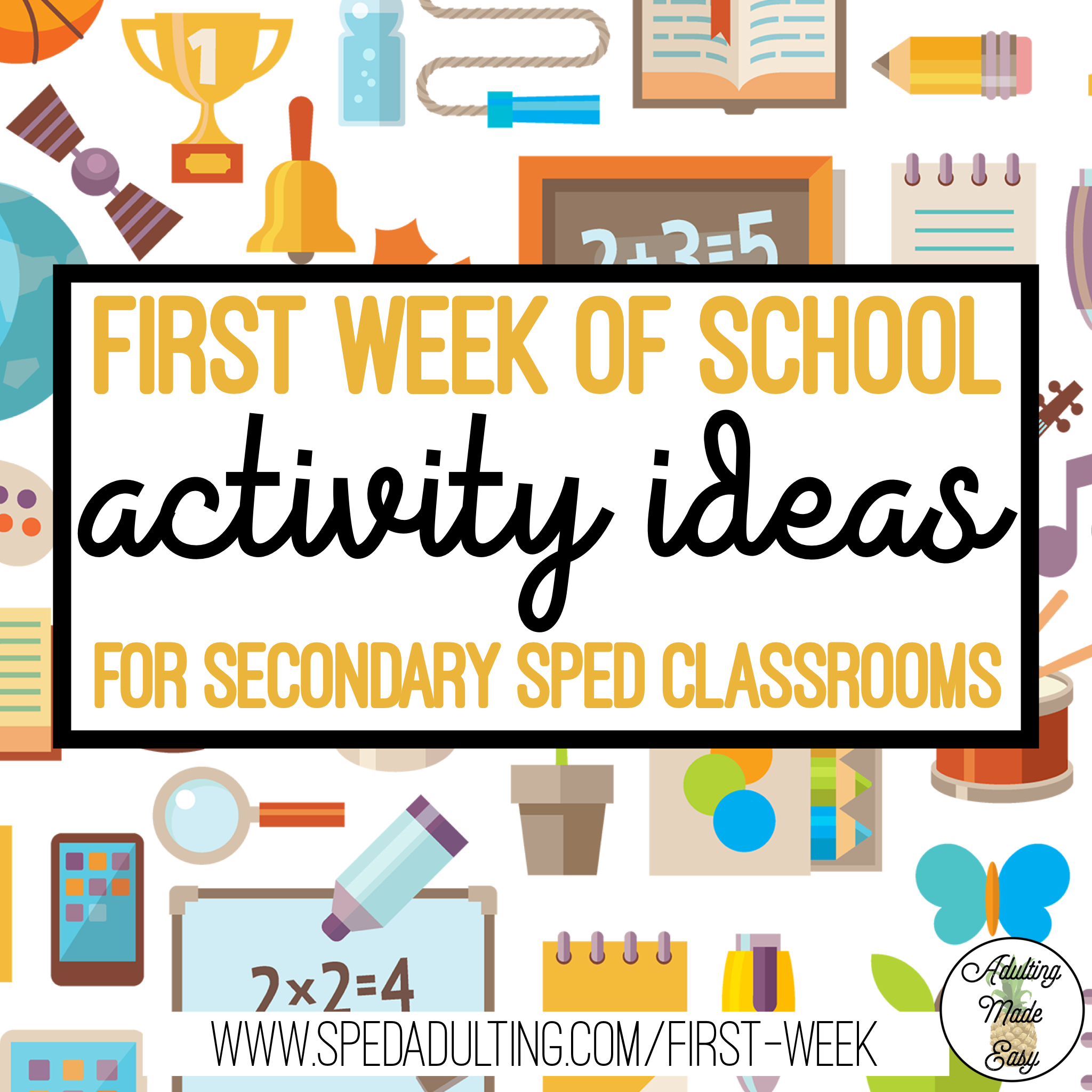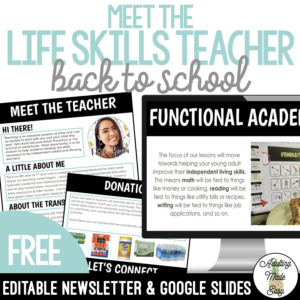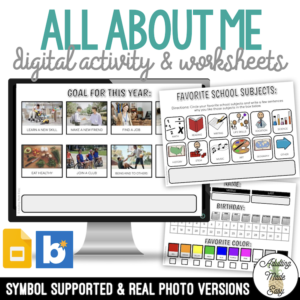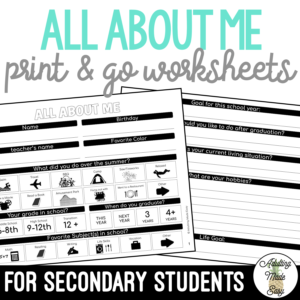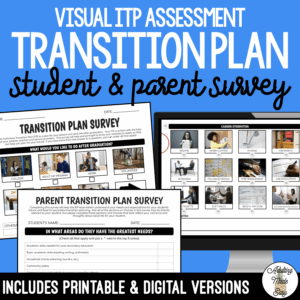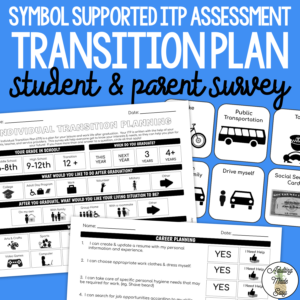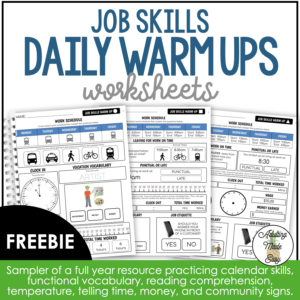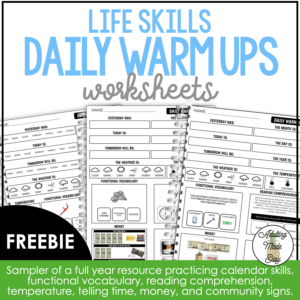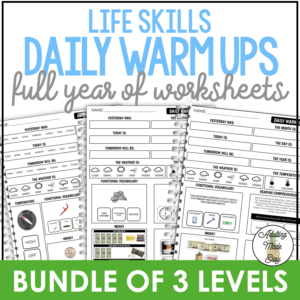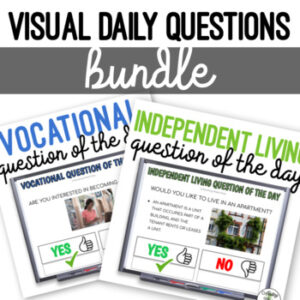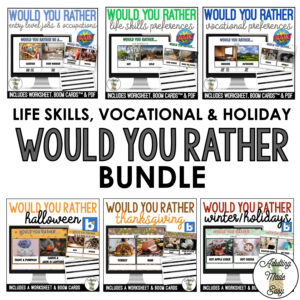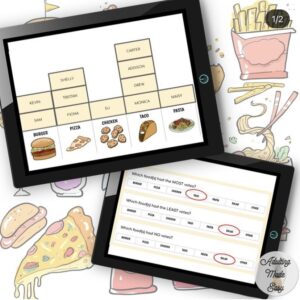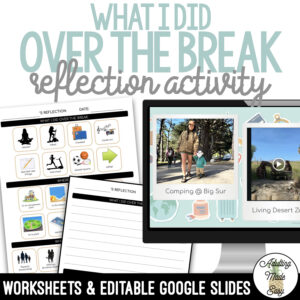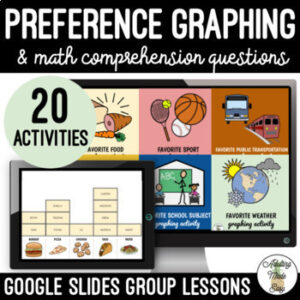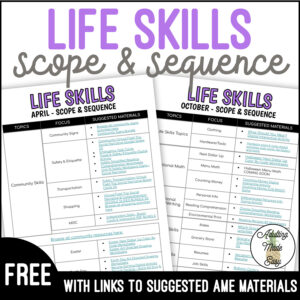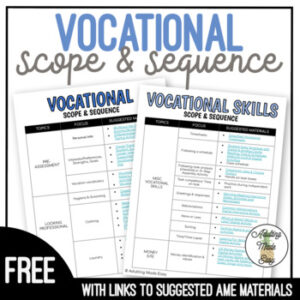Whether you’re starting with a brand-new group or welcoming back familiar faces, the first week of school in SPED is always a challenge—and often feels impossible to plan. If you’ve worked in special education before, you know how even a short break, like Spring Break, can disrupt routines and lead to increased anxiety or behaviors. Now imagine what a full summer break does—especially for students who didn’t attend ESY (Extended School Year).
Jumping right into academics can be overwhelming, particularly if you’re still getting to know your students’ learning styles and support needs. So, to help ease that transition, here are some helpful tips and activity ideas to start your week on the right foot—before jumping into the heavier academics!
Procedures & Establish Routine
Be ready to greet your students and establish basic routines. Once a student arrives to class, staff will do a basic introduction, and then show them where they will put their backpacks, lunches, restroom, etc. If there is some downtime and a student is unfamiliar with the room, I may also show them what is in the room (eg. Here is our classroom library..etc)
Procedures will look different for each classroom or grade level but I jotted down some ideas of procedures I go over in my own classroom. Whether you have the same students year after year or not, it’s great to refresh and set expectations. Procedures for the first day of school can include morning routine, desk organization, bathroom, technology, centers/rotations, IEP goals, independent work, breaks/calm corner, class jobs, finished work, supplies, community outings, and whole group.
Teacher/Staff Introductions
Since my students are majority visual learners, I created a visual PowerPoint presentation with an introduction to who I am, what I did over the summer, my hobbies, fun facts…etc. If you have the time to prep this, also include your paraprofessionals in your powerpoint presentation!
Student Introductions
This is where you will start to get to know what type of learner your students are. Since I teach secondary sped, I like to start off by using questionnaires that apply to their transition or career planning. Kill two birds with one stone, this is a great way to get some baseline information too. From here, I can call up one student at a time to come share their information and interests, and each student can get to know each other. This is a great opportunity for students to learn each others’ names and practice their social skills by having students go around saying hi to each other.
All About Me – Student Preferences
Transition Planning & Career Interest
Transition plan surveys for the student and parents/caregivers are another great way to find out student preferences, and plans for their future leisure and work life after graduation. This will essentially be what drives your creation of IEP goals for this student, as well as the lessons you will plan for your class throughout the year.
Make & Establish Classroom Rules Together
Start by preparing a large poster board or opening a blank document on your smart board. Begin a discussion with students about the importance of classroom rules. Share an example or suggest the first rule to get things started. Then, encourage students to contribute their ideas. Ask questions like: “What makes you feel frustrated?” or “What do you find distracting?” This approach helps students understand the purpose behind rules—such as using quiet voices to avoid distractions or prevent sensory discomfort for others.
You can also introduce this Daily Warm-Up Packet on the first day! Make it part of your morning routine for students to complete as they arrive. This activity is differentiated into three levels and is designed for Life Skills classrooms. During independent work, students can practice calendar skills (yesterday was, today is, tomorrow will be, month, day, weather), functional vocabulary, temperature, telling time, money and math, reading comprehension, and community signs. It’s a simple yet effective way to touch on multiple subjects without overwhelming the students.
Birthdays
If you already have birthday clipart or cards, have each student write or stamp their name and birthday on one. If not, index cards work just as well. Display the months of the year on the board. Then, go through each month one at a time, calling it out and inviting students with birthdays in that month to come up and add their card under the correct heading. Continue until all students are placed on the board.
To turn this into an academic activity, create a birthday graph with the class. Discuss which month has the most birthdays, the fewest, or even none at all. To extend the lesson, have students find and cut out letters from magazines to spell each month. Then, paste them together to create personalized Month Headers for your display—making it both fun and functional!
Surveys/Polls
Here’s a simple and engaging activity that most students enjoy participating in! Start by displaying two images on the board and asking students to vote on which one they prefer (for example, M&M’s vs. Skittles). Use this as a chance to extend the conversation by asking follow-up questions and encouraging students to share their opinions.
You can also present a variety of options and ask students to choose their favorite—for example, “What should we cook for our cooking lesson this week?” This activity is a great way to learn about your students’ preferences, support decision-making, encourage communication, and promote social interaction, all while giving you insight into their learning styles and interests.
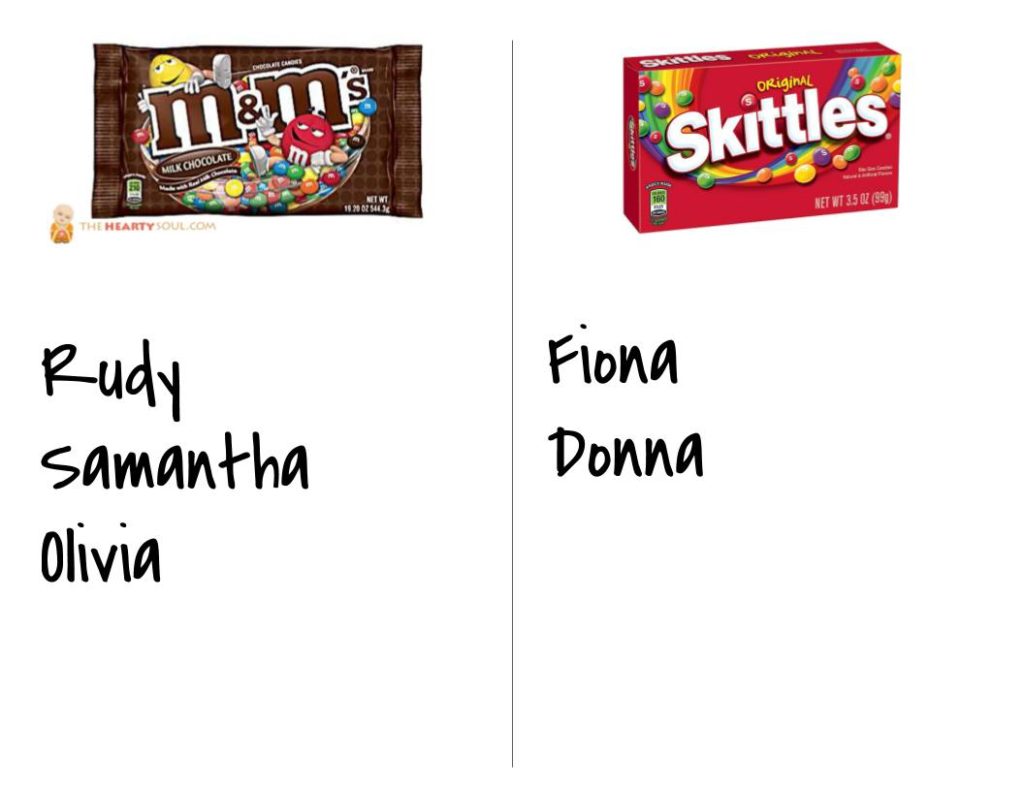
Question of the Day
A fun and free website you can use to conduct digital polls is www.classroomscreen.com. It allows you to create quick polls and automatically generates a bar graph of the student responses. This visual representation helps students easily see which choice received the most votes, making it a great tool for both engagement and data discussion (see example below).
Would You Rather – Daily Group Activity
Would you Rather questions are also a fun preference/discussion starter activity to do with students. “Would You Rather” questions are another fun and engaging way to spark conversation and learn about your students’ preferences. They make great discussion starters, encourage social interaction, and can even be used to practice decision-making and expressive language skills in a lighthearted way.
Preference Graphing – Weekly Group Activity
Here’s another fun preference graphing activity that allows students to share their likes and interests while also practicing important math skills! It’s a great way to combine social interaction with concepts like counting, comparing quantities, and analyzing simple data.
Morning Routine
Establishing a consistent morning routine is a key part of setting up a successful classroom environment—and it’s important to have it ready to go on day one! My morning routine includes a 5-minute stretch, reviewing classroom rules, going over our daily service and work schedule, checking the weather, discussing “How I’m Feeling,” and occasionally adding a question of the day or a quick survey/poll.
Want to take the guesswork out of planning your mornings? For more inspiration and ideas to build a routine you can rely on every day, check out this helpful blog!
Games
Don’t feel guilty about incorporating board games into your classroom—especially during the first week of school! Games provide a valuable opportunity for students to practice taking turns, following directions, using basic academic concepts, and developing language skills in a natural and engaging setting.
The beginning of the year is all about building relationships, and playing games offers a relaxed way to connect with your students before jumping into more structured activities.
Some great options to start with are low-strategy, high turn-taking games like Go Fish, UNO, Memory Match, Connect 4, and Jenga. These allow for frequent interaction and help establish a positive classroom community right from the start.
Scrapbook or First Day of School Craft
I have my students work on a scrapbook throughout the year. So on the first week of school, I usually take their picture (maybe holding a sign with the school year), and have them create a front page with introductions. They can also craft the cover of the scrapbook. If you feel comfortable enough to go the first week, take a trip into the community to purchase your scrapbook binders and stickers for your pages.
Get all of the materials listed above plus more in this money-saving bundle here:
Still feeling anxious about your first week? Check out:
Thanks for reading!

